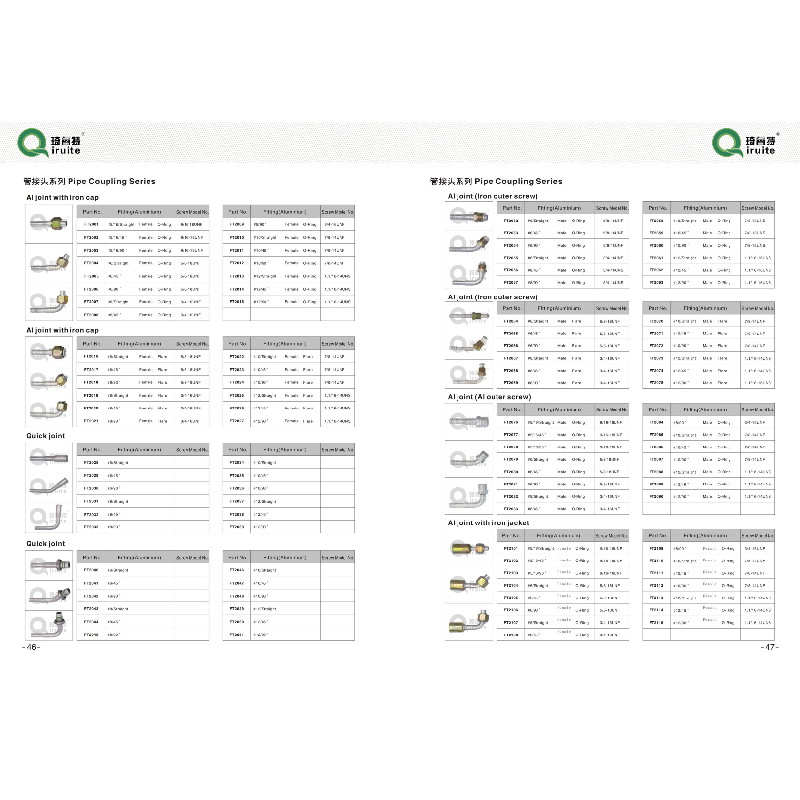slip on pipe coupling
Understanding Slip-On Pipe Couplings A Comprehensive Overview
In the world of plumbing, piping systems, and industrial applications, slip-on pipe couplings have emerged as essential components. These fittings are designed to connect two pieces of pipe, providing a simple and effective means of joining sections that may be of the same or different diameters. This article will explore the characteristics, advantages, uses, and installation procedures of slip-on pipe couplings, ensuring a thorough understanding of this vital plumbing accessory.
What Are Slip-On Pipe Couplings?
Slip-on pipe couplings are cylindrical fittings that are slipped over the ends of pipes to join them together. They can be manufactured from various materials, including stainless steel, carbon steel, and PVC, making them suitable for a wide range of applications. These couplings come in various sizes and are generally characterized by their straightforward design, which offers a clean and efficient method for connecting pipes.
Key Characteristics
1. Design As the name suggests, slip-on couplings easily slide over the pipe ends. They usually have a larger internal diameter than the external diameter of the pipes they are intended to join.
2. Material The choice of material for these couplings is crucial. Stainless steel is often chosen for its corrosion resistance, which is essential in applications involving water, chemicals, or extreme temperatures. On the other hand, PVC couplings are ideal for residential plumbing due to their lightweight and cost-effective nature.
3. Size Variety Slip-on couplings come in a variety of sizes to accommodate different pipe diameters. This adaptability makes them versatile for both commercial and residential projects.
4. Strength While slip-on couplings can support moderate pressure, it is important to consider their specific application. The capacity depends on the material and the type of jointing method used.
Advantages of Slip-On Pipe Couplings
- Ease of Installation Slip-on couplings are relatively easy to install compared to other couplings, such as welded or threaded fittings. They require minimal tools and can be installed quickly, which can be especially beneficial in time-sensitive projects.
- Cost-Effective These couplings are often less expensive than alternatives, making them an economical choice for many applications.
- Flexibility They can accommodate slight variations in pipe alignment and are often used in systems where flexibility is required. This adaptability can simplify installations in less-than-perfect conditions.
- Reduced Leakage When properly installed, slip-on couplings can create a tight seal that minimizes the risk of leaks, making them ideal for plumbing and industrial applications.
slip on pipe coupling

Common Applications
Slip-on pipe couplings are widely used across various sectors
- Plumbing They are commonly found in residential and commercial plumbing systems, connecting water supply lines, drainage pipes, and HVAC systems.
- Industrial Applications Slip-on couplings are often used in the oil and gas industry, chemical processing facilities, and power generation plants to join pipes that transport materials.
- Construction In construction, these couplings are used in structural applications where steel pipes are joined, providing a secure connection for scaffolding or support structures.
Installation Process
Installing slip-on pipe couplings involves several important steps
1. Preparation Ensure the pipe ends are clean and free from debris. Any dirt or corrosion can affect the integrity of the seal.
2. Positioning Slide the coupling onto one pipe. Align the second pipe with the coupling, ensuring that the ends of both pipes are even within the coupling.
3. Securing the Joint Depending on the material, you may need to weld, seal, or tighten clamps to secure the coupling in place. For stainless steel, welding is a common practice, while PVC may require adhesive.
4. Testing After installation, it is essential to test for leaks. This can be done by pressure testing the system or visually inspecting the joint after applicable fluids are introduced.
Conclusion
Slip-on pipe couplings are invaluable in a wide range of piping applications, offering a strong, cost-effective, and easy-to-install option for joining pipes securely. With their various materials and sizes, they provide flexibility and reliability, making them a go-to choice for many professionals in the plumbing and construction industries. Understanding their features and installation methods can help ensure proper use and longevity of piping systems, contributing to the overall efficiency and safety of fluid transport.
-
Understanding Power Steering Tube ReplacementNewsApr.16,2025
-
SAE J1401 Brake Hoses: A Critical Component for Vehicle SafetyNewsApr.16,2025
-
Pipe Couplings: Essential Components for Effective Plumbing and Fluid SystemsNewsApr.16,2025
-
Hose Guard Solutions for Every NeedNewsApr.16,2025
-
Effective Spiral Protection SolutionsNewsApr.16,2025
-
Effective Sewer Cleaning SolutionsNewsApr.16,2025

